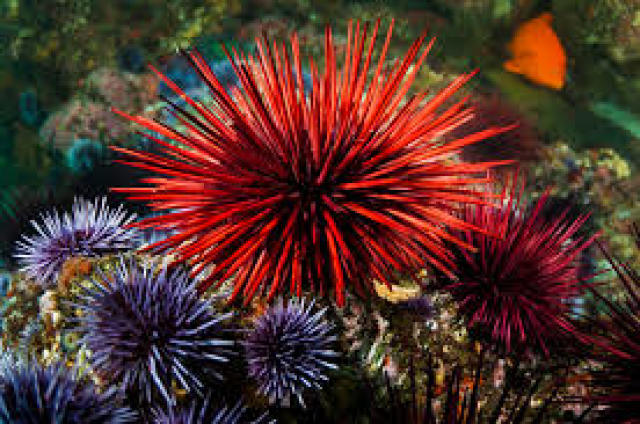Sea urchins are typically spiny, globular animals, echinoderms in the class Echinoidea. About 950 species live on the seabed, inhabiting all oceans and depth zones from the intertidal to 5,000 metres. Their tests are round and spiny, typically from 3 to 10 cm across. Sea urchins move slowly, crawling with their tube feet, and sometimes pushing themselves with their spines. They feed primarily on algae but also eat slow-moving or sessile animals. Their predators include sea otters, starfish, wolf eels, triggerfish, and humans.
Like other echinoderms, urchins have fivefold symmetry as adults, but their pluteus larvae have bilateral (mirror) symmetry, indicating that they belong to the Bilateria, the large group of animal phyla that includes chordates, arthropods, annelids and molluscs. They are widely distributed across all the oceans, all climates from tropical to polar, and inhabit marine benthic (sea bed) habitats from rocky shores to hadal zone depths. Echinoids have a rich fossil record dating back to the Ordovician, some 450 million years ago. Their closest relatives among the echinoderms are the sea cucumbers . Both are deuterostomes, a clade which includes the chordates.
The animals have been studied since the 19th century as model organisms in developmental biology, as their embryos were easy to observe; this has continued with studies of their genomes because of their unusual fivefold symmetry and relationship to chordates. Species such as the slate pencil urchin are popular in aquariums, where they are useful for controlling algae. Fossil urchins have been used as protective amulets.

